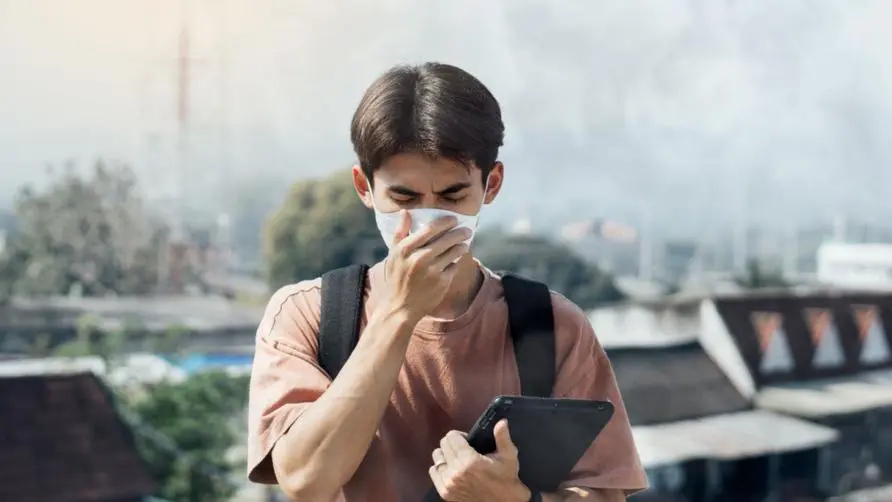Is it impossible to escape "air pollution" even if you stay indoors? Beware of "Six Major Respiratory Diseases" Coming to Your Doorstep

healthorn expert Q&A
Q: Is it difficult to escape “air pollution” even if you stay indoors? Are there carcinogens in the air?
A: There are many threats to the air in your home. In addition to smoking and burning incense, the easily overlooked “carcinogen formaldehyde” is the main source of indoor air pollution. The boards, sofas, mattresses, and curtains used for decoration will emit a large amount of formaldehyde, further causing the indoor formaldehyde to exceed the standard. Especially for women, children and people prone to allergies, if they live in a space with excessive formaldehyde for a long time, it will increase the frequency of allergies and skin inflammation, and may lead to female infertility, childhood leukemia, cancer and other symptoms.
To solve the problem of formaldehyde poisoning, it is recommended to seek formal formaldehyde removal companies to carry out indoor formaldehyde removal projects. Long-term formaldehyde removal projects usually take more than 3 days to recycle formaldehyde deep inside furniture and decorations using standard construction methods. And effectively decomposes to ensure that the formaldehyde concentration in the space is lower than the safe value for a long time. When selecting a manufacturer, special attention should be paid to choosing a manufacturer with a long-term warranty to ensure healthy and non-toxic indoor air quality for a long time and reduce the risk of cancer.
Are indoors also affected by air pollution? Pay attention to the “6 major respiratory symptoms” to come to your door
The outdoor air quality has been disappointing recently. Do you think you are safe if you stay indoors? In fact, hidden sources of pollution such as mold or dust indoors are often much higher than those in the outdoor environment. Long-term exposure to suspended matter in indoor and outdoor air may develop symptoms of serious respiratory diseases, such as asthma, cystic fibrosis or lung cancer.
What impact will air quality have on the human body? The U.S. Environmental Protection Agency (EPA) lists the six most common respiratory diseases and calls on the public to pay attention to related symptoms:
Allergy. Enesta Jones, a spokesperson for the U.S. Environmental Protection Agency, said the immune system irritates the nose and throat and releases mucous membranes to defend against allergens. People with allergies are prone to coughing and sneezing, and may also experience symptoms such as itchy and watery eyes. Everyday products such as cigarette smoke, pesticides, and perfumes can make allergies worse.
Asthma. Jones said that regardless of the outdoor or indoor environment, asthma patients are susceptible to allergens such as dust mites, smoke, and pollen in the air. Jones recommends that asthma patients be sure to wear a mask when going out and install air filtration devices at home or at work to prevent allergens from invading the lungs.
Dizziness. Indoor pollutants such as carbon monoxide and carbon dioxide may cause dizziness or dizziness, or even poisoning and nerve tissue damage. If you notice symptoms disappear after leaving the indoor space, be sure to check gas lines for leaks and perform appropriate maintenance on household appliances such as boilers, gas stoves, or water heaters.
Headache. Jones said areas with poor air quality could cause severe headaches for certain groups. Being in a poorly ventilated area, combined with headaches, dizziness, etc. may be a sign of high ambient carbon dioxide concentration. In addition, if your home is located in a severely polluted area such as a major road or airport, headache symptoms may be more frequent.
Fatigue. Previous retrospective studies have noted that fatigue is often associated with respiratory conditions such as asthma. For example, patients with asthma, lung disease or lung cancer tend to consume energy faster than ordinary people, which can lead to a decline in cognitive function and memory. Many asthma patients are in fear of getting sick at any time, which affects their mental health and causes “spiritual” fatigue.
Legionella infection. It is a lung infection caused by Legionella. This bacterium is commonly found in water pipes and cooling water of air conditioning systems. When the air conditioning system is turned on, Legionella bacteria are released into the air, causing lung infections. Jones pointed out that Legionella infection may cause fever, chills, cough, and in severe cases, loss of appetite, diarrhea and other symptoms.
How to avoid respiratory disease invasion? Improve the indoor environment with 3 tips
Nick Conger, deputy spokesman for the U.S. Environmental Protection Agency, suggested that people with respiratory diseases or those who are more sensitive to pollution sources can improve indoor air quality through three methods: allergen control, improving home ventilation, and using air filtration devices.
Conger said you can first identify the sources of indoor allergies, such as dust mites and asbestos, and remove them. Furthermore, windows should be opened for 5 minutes every 30 minutes to maintain indoor ventilation. Finally, the use of air filtration devices (such as air purifiers, air conditioning systems with filtration functions) to further improve indoor air will help patients with allergies or asthma relieve their symptoms.
Source:
Six symptoms of poor air quality
Further reading:





